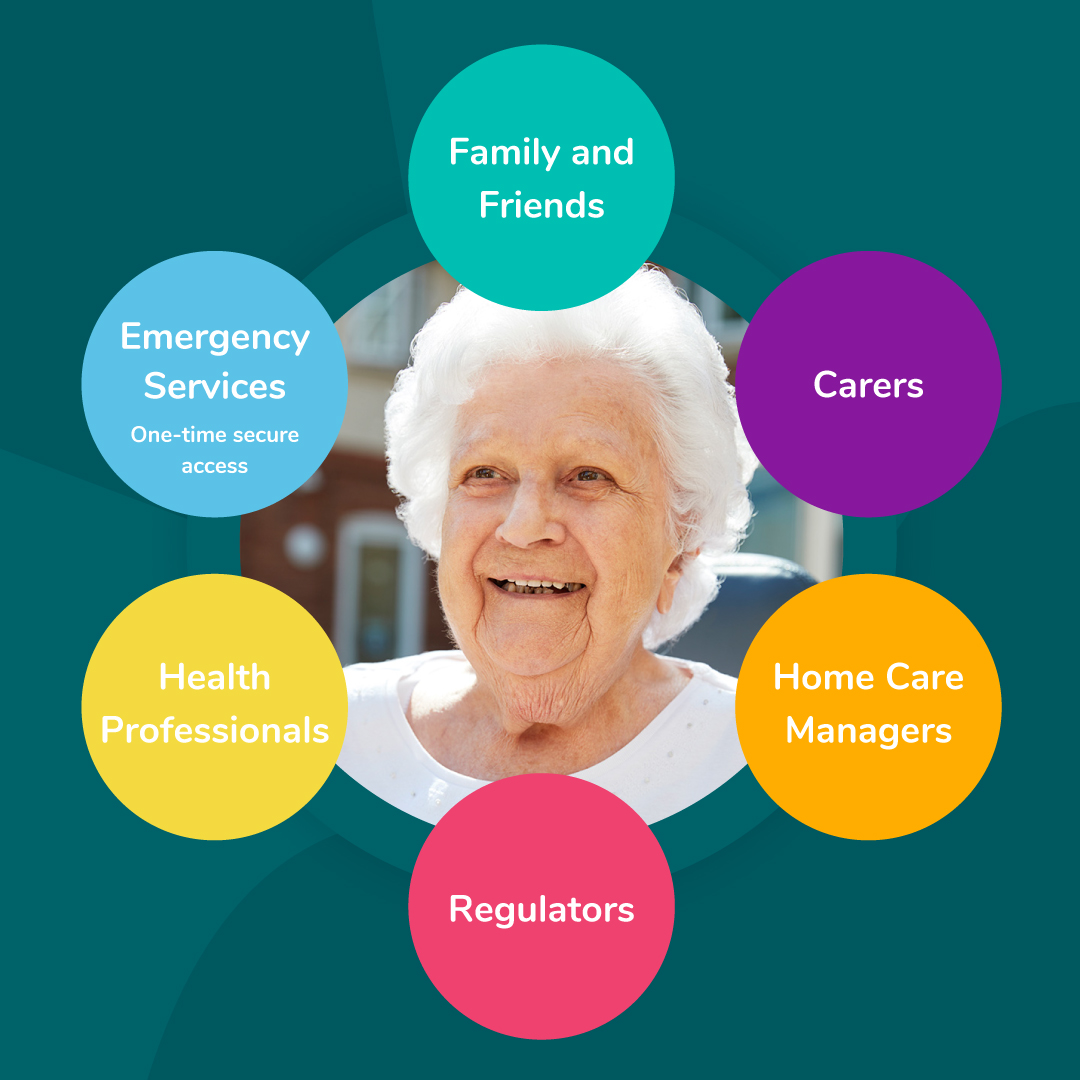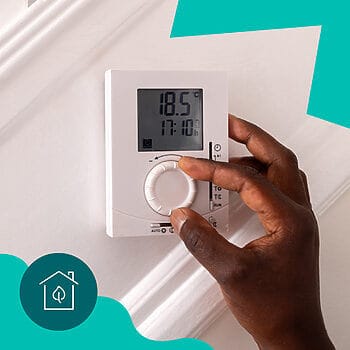Connecting carers, agencies, those receiving care, and their loved ones has never been more important. The pandemic shone a light on communication in the home care sector and has demonstrated that connecting all parties in a ‘circle of care’ is essential. This is particularly important when it comes to reassuring families and friends, taking a preventative approach to client care, and also easing pressure on carers too.
More recently, we’ve seen how the rising cost of living is impacting the everyday lives of many people across the UK and beyond. For home care workers, who travel an estimated total of four million miles per day, this is a growing problem. According to a recent survey by the Homecare Association, 82% of homecare providers surveyed said that the primary concern for staff on the cost of living was either down to the cost of fuel or energy bills. This is another reason why many carers are leaving their jobs – with reports citing a record high of 13.5% vacancy rates in the sector.
On top of this, local authorities are also feeling the pinch, with spiralling inflation adding £1.5bn to costs across the board.
So, what can we do to ease some of the burden on carers?
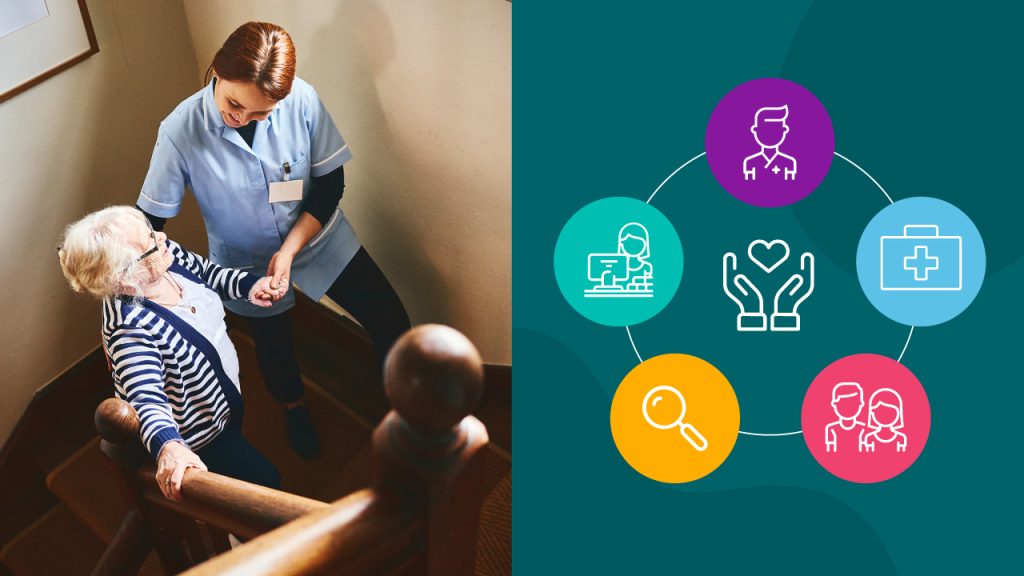
The importance of the circle of care
When a loved one needs help, you want to make sure they receive the best care possible. Putting the client at the centre of care service is fundamental. Our recent survey showed that over half of carers in home care have considered leaving the sector in the past 12 months, and 40% of them cited the inability to care for clients (together with stress) as one of the key reasons to do so.
However, a good circle of care should include more than just carers and encompass everyone who is in touch with the client: agency managers and administrators, GPs and social care workers, family and, if required, emergency services. All these people care for the client in different ways and all need access to the client’s health information: a GP may want to have an update on the client’s blood pressure to review their medication, while a family member may want to know what they had for lunch. Equally, an agency manager may want to check the carer’s visit notes and care given, while a paramedic who is called on site may need to access their medical history before making a decision on whether hospitalisation is needed.
Technology makes this information to be easily accessible and shareable amongst all those that are part of the circle of care. The benefits are manyfold:
- Peace of mind for family members – particularly those living far away, who can see at any time the health updates of their loved one. We can’t emphasise enough how important this aspect is for home carers, who are able to let families know easily about anything relating to the person being cared for, whether that’s meals, medication or mood. It stops families and friends from being as worried and calling the office for updates, which means staff are no longer losing time in answering these calls or other admin.
- Weighty cost savings for carers. With fuel prices going up and the cost of living crisis, not having to go into the office to get or drop clients’ records can make a big difference in saving time and money.
- For agencies it means better and more accurate management of the care service provided, as they can monitor in real-time carers’ visits, care given and any follow up notes.
There has always been a disconnect between the information carers have, from that held by family members, hospital and other stakeholders. The pandemic emphasised this issue even more, when family visits had to be scarce or even null, however, technology has allowed everyone in the circle of care to be always kept in the loop.
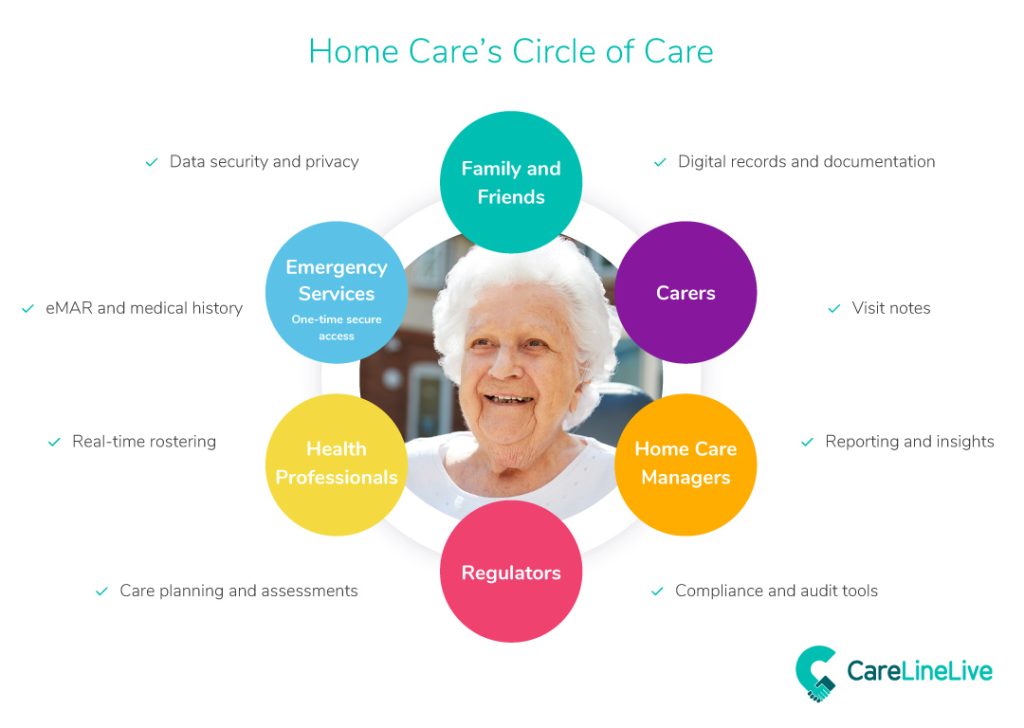
Circle of care software
CareLineLive incorporates a Care Circle Portal which helps keep family, friends, community health workers, emergency services and the whole circle of care in the loop by providing them access to up-to-date details of client care.
Family and stakeholders can be given visibility on medication administration, task and notes and see details of their visits – improving transparency and trust between the care agency, the service user and their families.
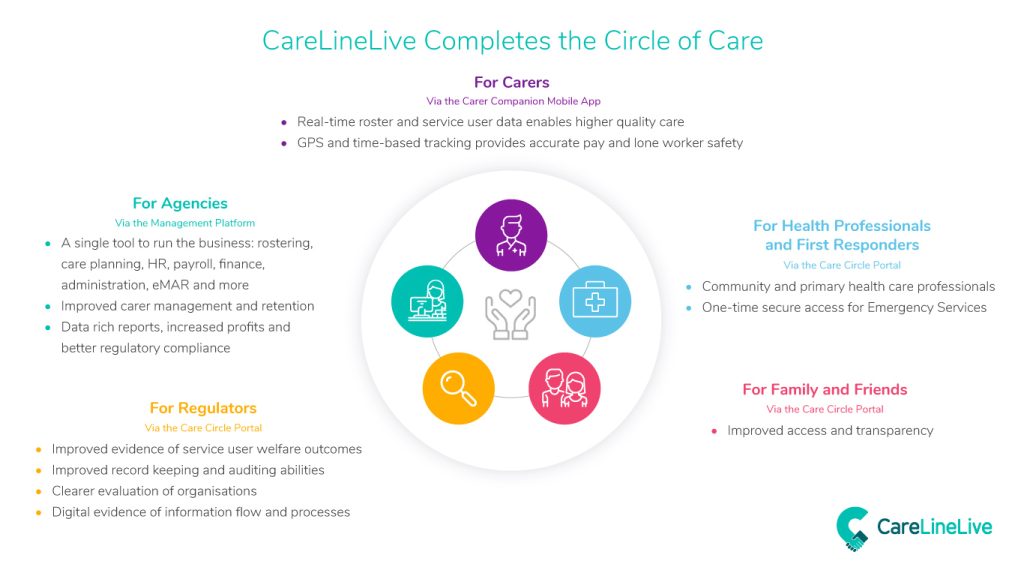
How technology is supporting the sector
We saw during the pandemic that it is possible for carers to deliver the highest standard of home care by providing them with simple but effective technology. In fact, our recent survey showed that technology has been a huge help for carers within home care, with 75% of carers using it to deliver better care to clients.
Notably, we have seen first-hand how deploying user-friendly technology can almost double its uptake among staff. Through online portals for example, carers can read all the information they need such as clients’ support plans, receive notifications from their head office or use the app to communicate with them. Carers cannot say that they don’t have the information as it is always on hand, and up to date. And of course, when it comes to the circle of care, it makes life easier for family and friends who can easily access the information they need when they need it.
The times ahead: predictions for home care
Use of technology shouldn’t be limited to something to take on just when critical times demand. Innovative technology tools provide carers – consistently and constantly – with the support they need for delivering the best care service they can.
It can play an important part in relieving anxiety and pressure from carers too, for example, by giving them the ability to provide their notes using a speech to text feature. This can make writing down notes simpler and quicker (perhaps doing this while preparing lunch or as they leave the client). It can also help with hospital discharges making them safer and quicker as care professionals can see the care available.
Interestingly, our survey showed that technology allowed them more time to deliver care and it made them feel more connected to clients and their loved ones. Ultimately, by providing carers with the right tools that can support them in their everyday tasks, they will be happier and more content in doing what they do best: caring.
